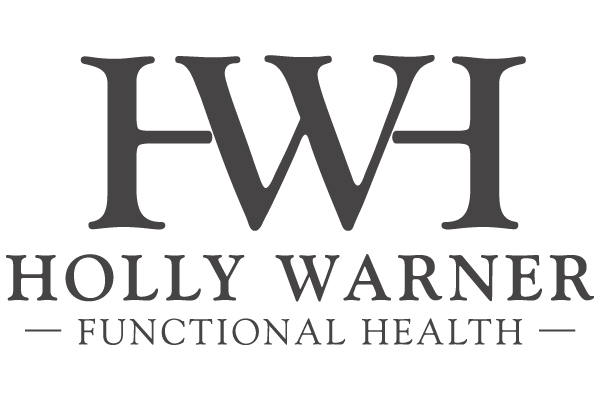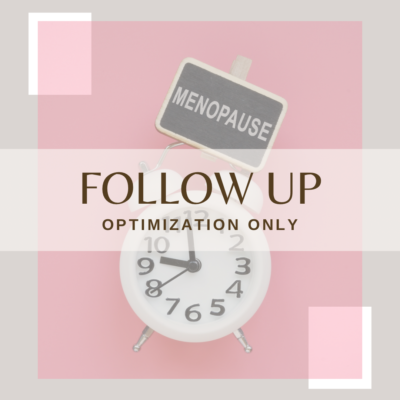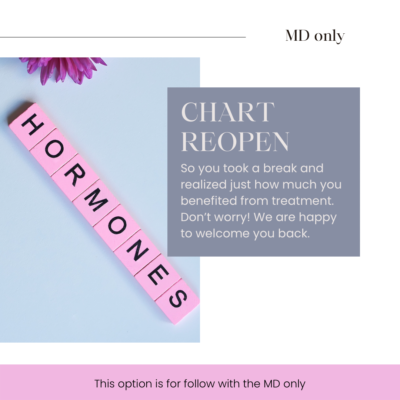With all the information out there it seems one thing we can agree on is that we need to supplement with vitamin D right? Wrong.
For some it could actually be the WORST idea. Yes even for those living in the colder climate with minimal sun to skin exposure cause it’s -30 outside.
Don’t get me wrong, I realize it’s popular but it’s also over prescribed.
First let’s start with what Vitamin D is – a prohormone. 80% of it comes from sun exposure, not diet or supplements. It’s the precursor to 25-hydroxyvitamin D (25-OHD), which is the inactive form or pre-hormone that is converted by the liver (with the help of magnesium) into 125 -hydroxyvitamin D (the active form).
25- OHD (the inactive form) floats around our body waiting to be converted into the usable form. Once activated by the kidneys (into 125- OHD) it is now usable – and used it is!! (By over 900 different genes in the body).
Vit D is fat soluble, This means if you have issues digesting fats or if you don’t have a gallbladder you are going to have a few issues utilizing it. If we are only getting 20-25% from our diet and you are someone who has issues with digesting fats then this goes right out the window and that is a problem. This is why sun exposure is so important.
Let’s talk testing
Most standard testing will show you only your 25 OHD levels. It’s the most prevalent form so why wouldn’t it be the most commonly tested, right? Problem is, it’s not the USABLE form, it’s inactive! While it is the more stable form (another reason it is more commonly tested), it wont show us much if it’s tested alone. 125-OHD doesn’t stick around as long since it’s getting used so the logic was let’s test the one that will give us a true reading… but it doesn’t.
The trick is to test both. As a rule of thumb you want your 25 OHD to be 1.3 times higher than your 125 OHD if you are in a healthy state, I’ll explain more on that in a minute. Your range should be between 35-52 for 25 OHD which means of you are healthy you want that 125 OHD to be 45.5 – 67.6 reflective of the 25 OHD number.
Let’s talk about what a healthy state is… it means free of chronic stressors, no infections and no chronic inflammation. If you are suffering from chronic thyroid symptoms you will typically also have chronic immune, inflammatory or autoimmune issues. This means you won’t have numbers in that 1.3 range, but that’s ok. We can tackle that when you come see me (hint, hint).
When we are under immune inflammatory stress ‘conditions’ our 25 OHD will be converted to 125 OHD at a much quicker rate, this means you will see lower numbers on your labs but it doesn’t mean you have a deficiency. It’s actually a sign you have an inflammatory mechanism that is increasing the rate of conversion.
Now that we understand we need to test both we need to understand what it means when we have low vitamin D numbers on a test.
If 25 OHD is low AND 125 OHD is also low this would be what is defined as a deficiency because both numbers are low.
Reasons for this are:
- malabsorption, we need to look at if you have absorption issues, fat absorption issues or if you are missing your gallbladder.
- How is your sun exposure? Are you getting enough?
- Magnesium, you need to have enough in order to convert and utilize so how is that level? Remember we need to test RBC magnesium not blood. If you need to supplement it should be a chelated version (see my recommended brand below).
Magnesium is a critical mineral found in soil, however many of us are deficient and that’s an issue. When we test we need to remember that only 1% of the magnesium in our body is in the blood, 99% is in our tissues so testing RBC is important. We need magnesium to convert vitamin D to 25 OHD.
Our bodies fight to maintain blood levels of specific things at the expense of our tissues, magnesium is one of them. This is why we want to add RBC version of magnesium testing to the other two vitamin D markers.
Low 25 OHD plus low 125 OHD but adequate or normal levels of RBC magnesium (between 6.2- 6.7) would mean you are definitely deficient and supplementation plus sun exposure would be advised. My question in this case would be WHY are you not absorbing your vit D?
If you have low 25 OHD +low 125 OHD AND your RBC magnesium is also low then I would say let’s get those magnesium numbers up before looking at supplementing with vitamin D. You may just have a magnesium issue.
Try 30 days supplementing with chelated magnesium (like the one below) and then retest all three markers. If you see improvement then you know you have hit the nail on the head, but if you see your magnesium levels improve and you still have low levels of the other two then you are looking at absorption issues. If could be a genetic issue, an enzyme issue or perhaps you have low HCL.
If you have low 25 OHD but your 125 OHD is within range this is where you DO NOT want to be supplementing. You likely have enough as it is however you may need to address other underlying issues like stress, an active infection or inflammation that are throwing off conversion. If it’s short term it will regulate itself in time, however if it is more chronic that is a different story.
High levels of 125 OHD above 42 have been shown to increase osteopenia or osteoporosis. This means if you have a longer lasting elevation due to more chronic conditions (chronic stress, chronic inflammation or a chronic infection). When we maintain a 125 OHD level above 42 it increases absorption of calcium by our GI tract, it will also PULL the calcium from your bones (not ideal).
This also signifies that there is some sort of chronic inflammation and likely a bacterial overgrowth -now you see why it is a full time detective job deciphering labs.
For 125 OHD to be effective it needs to bind to VDR receptors. Those are the building sites that do all the work. The bacteria have learned how to shut down the VDR so it doesn’t work. Now you’re converting all this 25 OHD into 125 OHD but it can’t bind to the VDR. The bacteria either inhibits the binding or it inhibits the function of the VDR so it isn’t doing what it is supposed to be doing. This in turn leads to more inflammation so you DO NOT want to supplement.
You need to clear up the bacterial infection (which many thyroid patients have whether they are aware of it or not. If you are hypothyroid or have autoimmune thyroid disease you should be tested to see what underlying bacterial infections could be at play. This is all part of what we call the CDR (Cell Danger Response)
Having this means you are already susceptible to gut infections and other pathogens in the body. We think that by boosting vitamin D we are helping our immune system by giving it a good boost, however this can be counter intuitive. You are fueling those unwanted bacteria and/or pathogens so they stick around longer.
Levels of 125 OHD that are elevated and sustained at an elevated level will cause vitamin D receptors to become less efficient over time. Same idea as insulin resistance or leptin resistance. Where the cells stop listening to the leptin which tells you to “stop” eating. This is now being shown in the research to be true for vitamin D where over time the VDR receptors become less competent
Sustained levels of 125 OHD will suppress the enzymes that convert vitamin D into 25 OHD and subsequently 125 OHD, simply because the body thinks it isn’t needed.
Research has shown that with autoimmune issues like MS or Hashimoto’s loading up on high dose is NOT the answer. Yes it may lower the antibodies but are you really addressing the issue? No. High dose vitamin D increases 125 OHD (as we determined earlier), which binds to the VDR. This downregulates the adaptive immune system which in turn lowers your antibodies. How is this a bad thing? I mean isn’t that the goal? Yes it is.
Our antibodies are part of our CDR (cell damage response), which is a protective response. Proper VDR helps stabilize mast cells. Say that again…. VDR STABILIZES MAST CELLS!! This means that many with mast cell activation have sustained (elevated) levels of 125 OHD.
If we are losing the function of the VDR receptor we won’t have the stabilizing effect on our mast cells form the vitamin D we are supplementing with. This means instability of mast cells, increased histamine response, increased reactivity, increased food sensitivity etc.
You are basically playing physiological whack a mole – to quote a colleague of mine. Lower antibodies increase mast cell activation…. not great.
Dosage
IF supplementing has been determined to be necessary then we need a starting point. More is not always better in this case. It is better to take your time to bring the levels up rather than mass dosing all aot ounce in high levels. Between 2000-4000 IU/day or even pulsing it to every other day. I don’t recommend going past 5000 IU in extreme cases, the days of 10,000 IU are simply out dated as far as research shows us.
The quality of the vitamin D is also important. Seeing as it is a fat soluble vitamin you need to be aware of quality, method it is administered and how it is suspended. Most people have digestive issues in general so my preference is almost always liquid. You need to ensure the base is not a rancid oil though. If it is in an MCt base you want to know where the MCT was derived (it may not be coconut). If it is olive oil then this is also a concern, be sure it is pure olive oil and not rancid. Watch out for inflammatory oils like soybean oil. How was the oil extracted? Was it heat? Was it damaged in the process making it reactive? If it is then it will not have the same absorbability.
Final Note
Patients with chronic thyroid symptomology who don’t have antibody levels elevated might notice that their antibody portion of their immune system just isn’t functioning. After working on it for a while patients may seem that all of a sudden the have activated antibodies, this is normal and in fact part of the healing process. It means you have awakened part of your immune system, that is a good thing. You are becoming healthier believe it or not.
Remember that:
Normal Range & Appropriate
VS
Abnormal Range & Appropriate
If your 25 PHD is low but 125 is high the 125 may be looked at as abnormal but it is actually normal if you are suffering inflammation, chronic stress or an infection of some sort. This means those are appropriate for what is happening within the body. Learn to look at your lab results with this in mind and you will find a whole new eye opening experience as to what you labs actually say. This is why it is so important to find a functionally trained practitioner.
Need help finding one? We offer telemedicine , which means no matter where you are we can help! Need a full panel? Want proper testing? Give us a call for a free 15 min courtesy call and let’s see if there is a fit for your needs. 833-477-077 ext 2 or shoot us an email at admin@hollywarnerhealth.com
Check out this brand of Vit D3 + K2, if you are not aware of why it’s so important to use both then check out my article here





